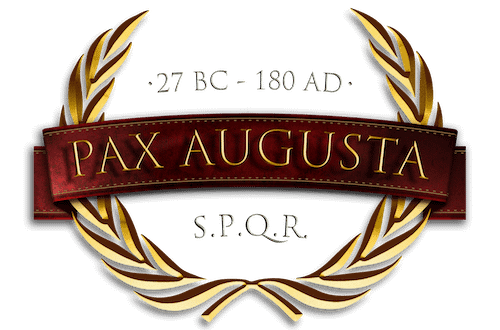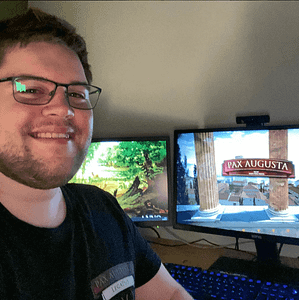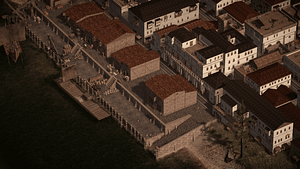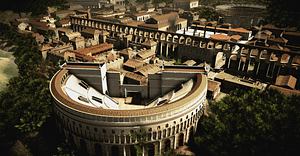How accurate is Pax Augusta actually? To answer that, we need to briefly look at the origin of the project.
As a passionate player of historical city builder games, I was always annoyed that the people were depicted as too large and the large buildings were proportionally too small. So I started visiting archaeological excavation sites to photograph floor plans on information boards. Based on these, I created the first buildings. The problem from today’s perspective: The floor plans were correct, but what was built on top of them was a mix of what I knew from Hollywood and the old Roman city builder games.
Since I have no problem with constructive criticism, I posted my first buildings on social media and clearly communicated: If there’s anything wrong with the models, let me know. And the first archaeologists spoke up. One of the first was Marko Jesulic, an archaeologist from Germany. In long conversations, he explained to me all the details, connections, and mistakes in my models. Other archaeologists joined in over time. They were all very helpful and provided me with academic research papers, books, and invited me to private tours in archaeological parks.
Over time, I developed an understanding of how buildings might have looked. I deliberately write might because it’s not always entirely clear. How tall, for example, was a residential house? Well, that’s difficult to say. Because after the fall of the Roman Empire, buildings were dismantled and the building materials were reused. So only the floor plans remained. One might argue that in Pompeii and Herculaneum, complete buildings can still be found. That is correct, but not entirely. One must consider that cities in present-day Italy were wealthier and thus built differently due to different climatic conditions than in the region of Gaul and Belgium, where the game is set. Fortunately, a complete side wall of a house collapsed. The stones were simply left lying. So at least today we know how tall this specific building was. Such anecdotes and hundreds of others led to the game looking the way it does today. But it’s not entirely precise. For example, there are at least three hypotheses about the appearance of a temple in Augusta Raurica. Or in the gladiator arena of Vindonissa, even in the museum, one finds various hypotheses. Sometimes I combined different hypotheses or stuck to a specific one. However, things that were proven to be wrong, like chimneys, I adjusted.
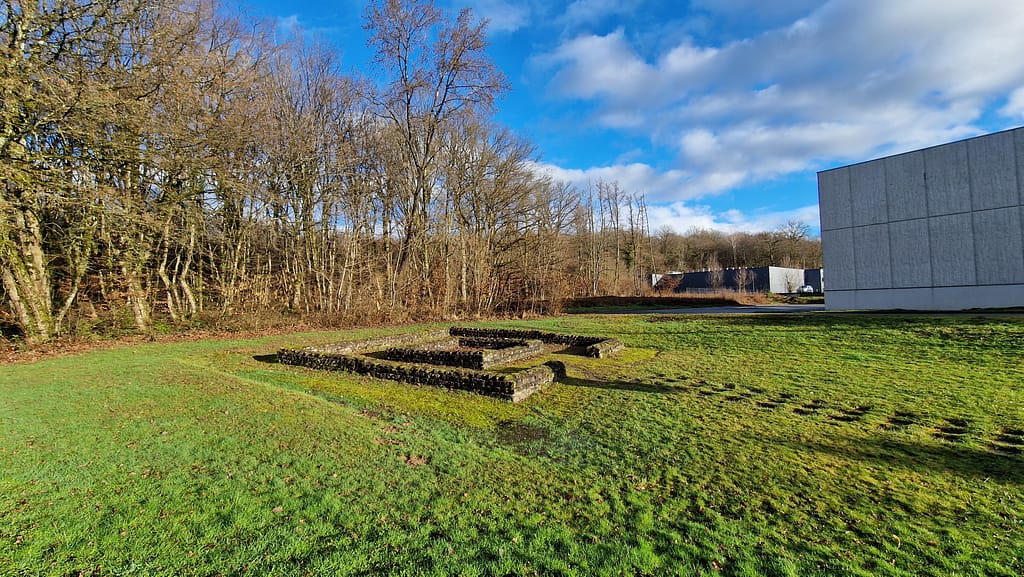
In earlier versions of the game, I put chimneys on the house roofs. Until experts contacted me and pointed out that the Romans didn’t have chimneys as I had installed them. I then thought: Did they all freeze in winter? So I began the adventurous journey into the world of archaeology to understand the phenomenon of heating and chimneys. My first realization: The Romans knew chimneys. These were mostly built above bathhouses. But these were very small, about 20 cm in size, elements that remind me of a kind of mushroom. In Augusta Raurica, for example, you can see them above the kitchen area in the Roman house. However, in simple wooden houses, called strip houses, no chimneys are found. The Romans did heat inside the houses or had open fires. However, the high rooms allowed the smoke to simply draw off through the roof shingle. And so it happened that I had to remove the chimneys from all the buildings. I could show dozens of other examples. But I think the approach is clear: it’s a constant process of optimizing and adapting.
An important aspect of this issue is that it’s a game. That means: Certain elements are intentionally different because ultimately, it should be fun to play. So I initially wanted to create an absolutely accurate world map, where every settlement, every village, every road, every bridge, etc., is historically documented. But I quickly realized that this would require years of research. As you surely know, I develop the game in my spare time. During the day, I have a regular job. Therefore, I have to focus on what brings added value to the game and what would be nice to have but is unrealistic as a one-man hobby project. So the world map is reasonably accurate. For example, the main roads and major cities will correspond to the current state of knowledge. The rest, however, is adjusted so that it makes sense in the later story mode.

Now I want to answer the original question: Is Pax Augusta historically accurate? No! For one thing, that’s not possible because there are many things we still don’t know. For example, in Gaul and Germania, we find so-called dodecahedra, of which we have no idea what they were used for. Or so-called Jupiter giant columns, which were only found in a specific area of the Romans. Why they were only there, we don’t know. Furthermore, I don’t have an archaeological education. So I am open to professionally sound and substantiated inputs and gladly accept the current state of knowledge. Thus, Pax Augusta is not historically accurate. But it is probably the most accurate Roman city builder game to date.
